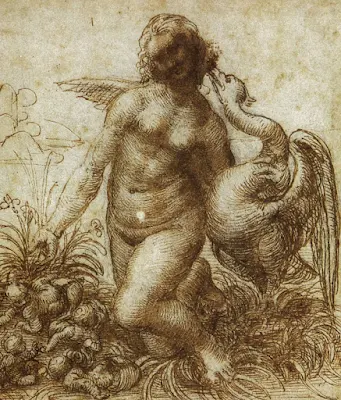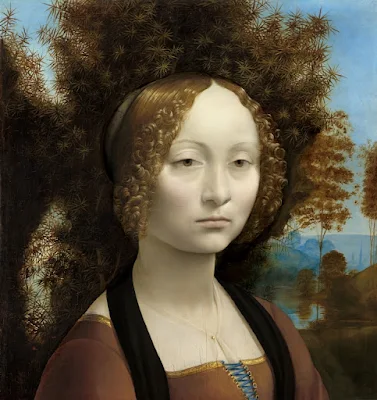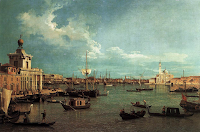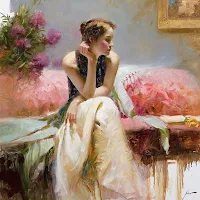Unveiling the Mastermind: Leonardo da Vinci - A Renaissance Maestro
Leonardo da Vinci, the epitome of a Renaissance polymath, was much more than just an Italian artist. With a repertoire spanning across art, science, engineering, and philosophy, da Vinci's legacy continues to inspire and awe centuries after his time.
Join us on a journey through the life, works, and brilliance of this multifaceted genius.
Background and Early Life
Born on April 15, 1452, in Vinci, Italy, Leonardo was the illegitimate son of Ser Piero, a notary, and Caterina, a peasant girl. Raised in Vinci, young Leonardo had early access to scholarly texts and was immersed in the rich artistic tradition of his surroundings.

Education and Training
Leonardo's artistic journey began when he was apprenticed to Andrea del Verrochio's workshop in Florence at the age of 15. His talent quickly emerged, surpassing even his master's skill, leading to remarkable opportunities for the budding artist.
Artistic Style and Influences
Da Vinci's style is characterized by meticulous attention to detail, mastery of light and shadow, and a profound understanding of human anatomy. Influenced by the works of renowned artists of his time, Leonardo developed a style uniquely his own, blending realism with a touch of mystique.
Career Highlights
His career flourished when he entered the service of the Duke of Milan in 1482. Over 17 years, Leonardo's artistic prowess and ingenuity shone through as he worked on various commissions, scientific studies, and engineering projects.
Exhibitions and Shows
Leonardo's works have graced numerous exhibitions and solo shows, captivating audiences with their beauty and complexity. From the halls of Milan to international showcases, his art continues to draw crowds and admiration.
Publications and Media
Throughout his life, Leonardo's work garnered attention in various publications and media platforms. His insights into art, science, and philosophy were widely discussed and celebrated, cementing his status as a visionary of his time.
Collections
Leonardo's masterpieces adorn prestigious public and private collections around the world. Museums and galleries proudly display his works, showcasing his enduring influence on the art world.
Artistic Philosophy
At the core of Leonardo's artistic philosophy lay a deep curiosity about the world around him. His works often reflected his quest for knowledge, exploring themes of nature, humanity, and the mysteries of existence.
Current and Future Projects
Even today, Leonardo's legacy continues to inspire contemporary artists and thinkers. Ongoing projects and exhibitions pay homage to his genius, ensuring that his contributions to humanity remain ever-present.

Masterpieces Unveiled
Leonardo da Vinci's Timeless 19 Artworks Display
Frequently Asked Questions
☛ Who was Leonardo da Vinci?
Leonardo da Vinci was an Italian artist, scientist, and inventor known for his iconic works such as the Mona Lisa and The Last Supper.
☛ What was Leonardo da Vinci's early life like?
Born in Vinci, Italy, in 1452, Leonardo was the illegitimate son of a notary and a peasant girl. He showed early signs of artistic talent and was apprenticed to Andrea del Verrochio in Florence at the age of 15.
☛ What is Leonardo da Vinci's artistic style?
Leonardo's style is characterized by realism, meticulous detail, and a profound understanding of human anatomy. His works often feature soft transitions of light and shadow, creating a sense of depth and realism.
☛ What were some of Leonardo da Vinci's major achievements?
Leonardo's major achievements include iconic paintings like the Mona Lisa and The Last Supper, as well as ground breaking scientific studies in anatomy, engineering, and optics.
☛ Where can I see Leonardo da Vinci's works?
Leonardo's works are housed in various museums and galleries around the world, including the Louvre in Paris, the Vatican Museums in Rome, and the Uffizi Gallery in Florence.
☛ Did Leonardo da Vinci have any famous inventions?
Yes, Leonardo conceptualized and designed numerous inventions, including flying machines, war vehicles, and hydraulic systems. His designs were centuries ahead of his time and continue to inspire inventors today.
☛ What was Leonardo da Vinci's philosophy?
Leonardo's philosophy was rooted in curiosity and a thirst for knowledge. He believed in the interconnectedness of all things and sought to understand the mysteries of the universe through observation and experimentation.
☛ How did Leonardo da Vinci influence future generations?
Leonardo's multidisciplinary approach to art and science laid the foundation for future generations of artists, scientists, and thinkers. His legacy continues to inspire creativity and innovation across various fields.
☛ Was Leonardo da Vinci recognized for his work during his lifetime?
Yes, Leonardo received recognition for his work from various patrons, including royalty and nobility. However, he was also known to be highly critical of his own work and often sought perfection in his creations.
☛ What is Leonardo da Vinci's lasting legacy?
Leonardo da Vinci's lasting legacy lies in his unparalleled contributions to art, science, and human knowledge. His works continue to captivate and inspire people around the world, reminding us of the limitless potential of the human mind.
Conclusion
Leonardo da Vinci's life and work exemplify the boundless possibilities of human creativity and intellect. As we delve into his world, we uncover not just an artist, but a visionary whose influence transcends time and space. From his captivating paintings to his ground breaking scientific studies, Leonardo da Vinci continues to inspire and ignite the imagination of generations to come.
Explore more Italian Artist
Courtesy, Credits and Thanks
Explore more about Artist Leonardo da Vinci
en.wikipedia.org: Dive into Leonardo da Vinci's fascinating life and work on Wikipedia.
www.leonardodavinci.net: Explore Leonardo da Vinci's portfolio and legacy at leonardodavinci.net.
www.mos.org: Discover the captivating biography of Leonardo da Vinci at mos.org.





























